Crabs come in all shapes and sizes, from tiny pea crabs to giant Japanese spider crabs. But what is the biggest crab in the world? Let’s take a look at some of the largest crab species to find out.
Japanese Spider Crab
The Japanese spider crab (Macrocheira kaempferi) is considered the biggest crab in the world. This massive crab lives around the Japanese islands and has spindly spider-like legs that can span over 13 feet! Their bodies can grow up to 15 inches wide and weigh up to 40 pounds.
Japanese spider crabs are mostly active at night, when they scavenge the ocean floor for food like mollusks, fish, and dead organisms. They live solitary lives except during mating season. Their sweet, tender meat makes them a treasured delicacy in Japanese cuisine.
Tasmanian Giant Crab
Hailing from the waters off Tasmania, Australia, the Tasmanian giant crab (Pseudocarcinus gigas) is another contender for world’s biggest crab title. These giant crustaceans can weigh over 20 pounds, with an 18 inch wide body. Their massive claws can reach 17 inches long.
Tasmanian giant crabs live and breed in the deep ocean, feeding on small fish, crustaceans, and dead animals. They help control prey populations and recycle ocean nutrients, making them a key part of the underwater ecosystem.
Coconut Crab
The coconut crab (Birgus latro) is the largest land-dwelling arthropod in the world. These huge crabs live on tropical islands in the Pacific and Indian Oceans. They are famous for their ability to climb coconut trees.
Coconut crabs can have a leg span over 3 feet across and weigh up to 10 pounds. Their strong pincers enable them to crack open coconuts, their namesake food source. But they will eat just about anything, including fruits, nuts, small animals, and carrion.
Alaskan King Crab
With leg spans over 5 feet and weights up to 28 pounds, Alaskan king crabs (Paralithodes camtschaticus) rank among the largest edible crabs They inhabit the cold northern Pacific Ocean, especially the Bering Sea and Gulf of Alaska.
Alaskan king crabs have spiky shells and long, spidery legs. They scavenge for food along the seafloor, eating mollusks, fish, algae and more. Strict fishing regulations help maintain healthy populations of these prized crabs.
Giant Japanese Spider Crab
The largest crab ever recorded was a Japanese spider crab nicknamed “Big Daddy.” This monster crab had a leg span of over 11 feet and the longest leg reached nearly 5 feet long! Big Daddy weighed 13.6 kg (30 lbs) and lived to the ripe old age of 80 years before passing away in 2016.
Dungeness Crab
Along the North American Pacific coast, Dungeness crabs (Cancer magister) are both a key fishery species and culinary treat. These large crabs inhabit sandy coastal waters from Alaska to California.
Male Dungeness crabs can reach 9 inches wide and weigh up to 3 pounds. They have an oval, spiny carapace and two unequal claws. Their sweet, tasty meat makes up around 25% of their weight.
Snow Crab
In the cold northern oceans lives the snow crab (Chionoecetes opilio). These crabs reach about 6.5 inches wide and 3 pounds. Their carapace is oval with spikes, and their legs are long with small spines.
Snow crabs have sweet, delicate meat that makes them highly desirable to fishers. However, regulations are in place to prevent overfishing of these cold-water crabs.
Giant Mud Crab
Giant mud crabs (Scylla serrata) live in the waters of the Indo-Pacific region. They can grow up to 11 inches wide and weigh over 11 pounds. Their large size and tasty meat make them an important fishery species in Asia.
These robust crabs have big claws for capturing prey like fish, mollusks and other small creatures. They inhabit coastal mangroves, estuaries and shallow waters.
Red Rock Crab
Along the eastern Pacific coast, red rock crabs (Cancer productus) are a smaller crab species, reaching up to 6 inches wide. They have a reddish-brown camouflage shell and red-tinted legs and claws.
Red rock crabs live in various coastal habitats, including tide pools and seagrass. They are omnivorous, eating small invertebrates, crustaceans and fish.
European Spider Crab
In the eastern Atlantic Ocean and Mediterranean Sea dwells the European spider crab (Maja squinado). They can reach 7 inches wide with a spiny, camouflaged shell and long, spindly legs.
These omnivorous crabs mostly eat dead animals. Their tasty meat makes them a popular seafood choice, although sustainable fishing practices aim to prevent overharvesting.

Of Crabs and Rats
Palmyra Atoll is a naturalist’s wonderland, with so many creatures to capture your attention. There are manta rays and gray reef sharks, sea turtles and huge colonies of birds. And fish of every conceivable size and color. With all these charismatic species around, it might seem hard for an invertebrate to win anyone’s heart.
But the crabs hold their own.
In part, it’s because they’re everywhere. There are the strawberry hermit crabs patrolling the beaches, and little fiddlers darting into burrows. There are crabs outside your cottage, around the docks, and in mind boggling numbers at the food refuse pit (any food waste is eaten within hours).
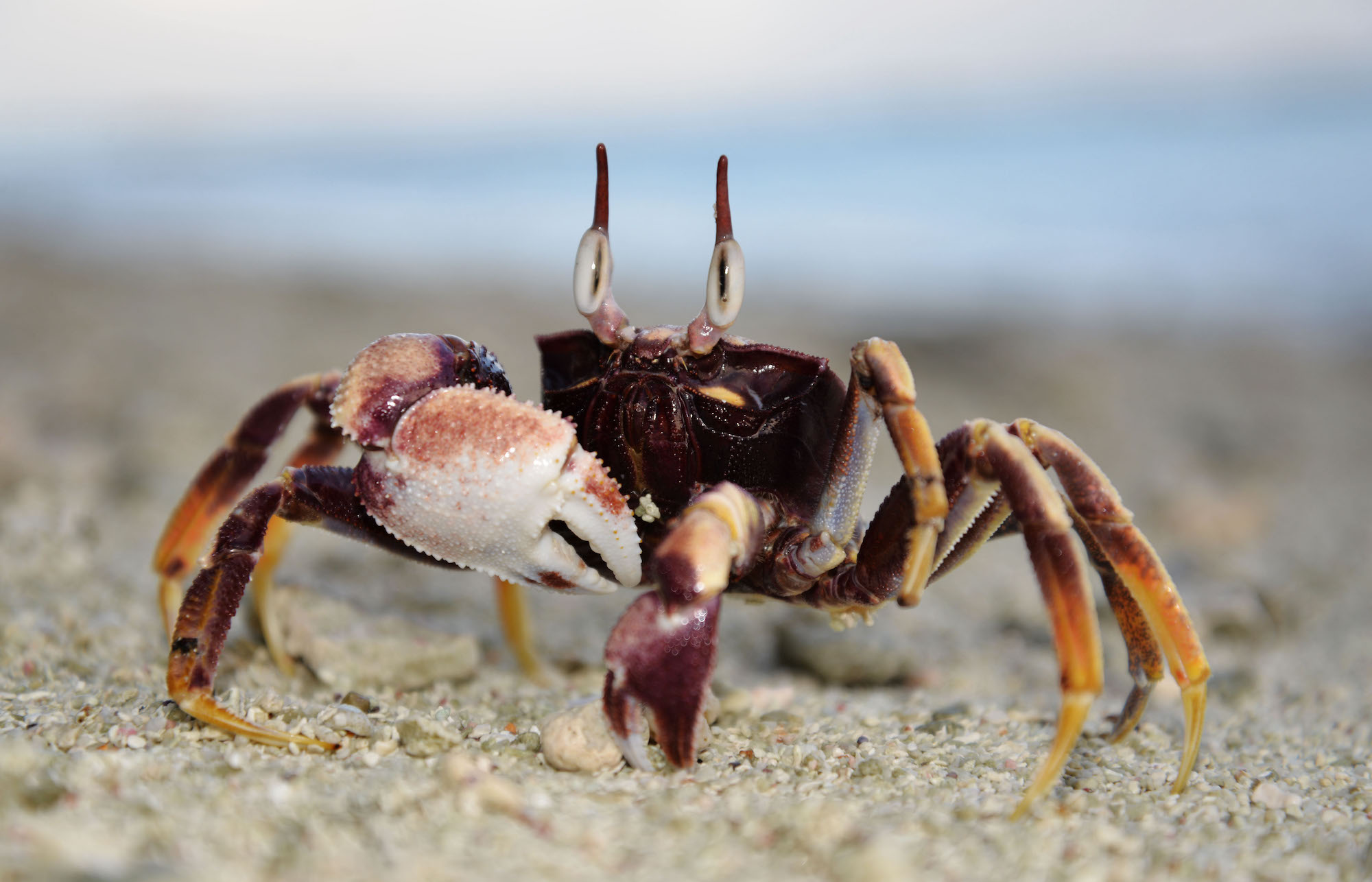
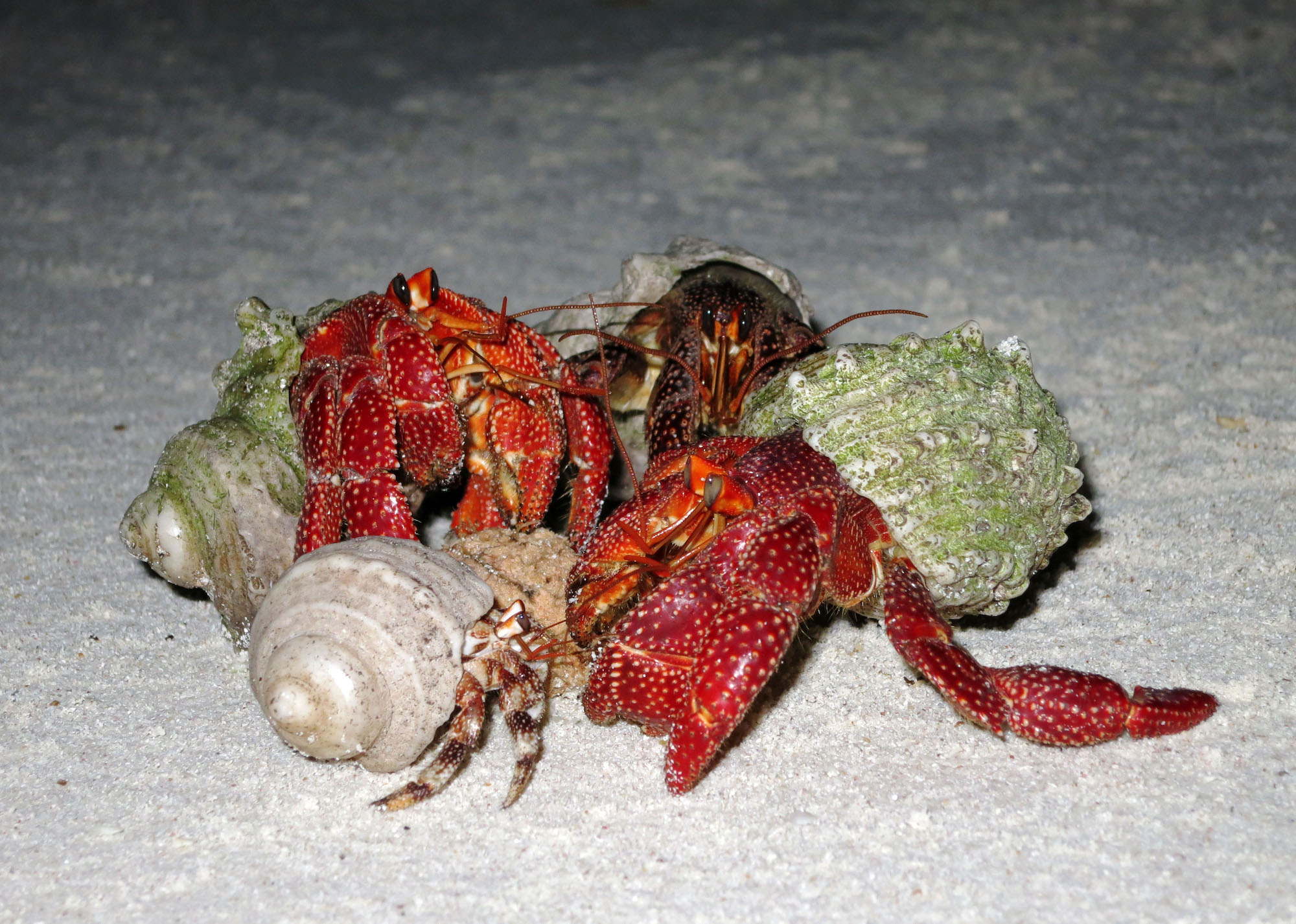
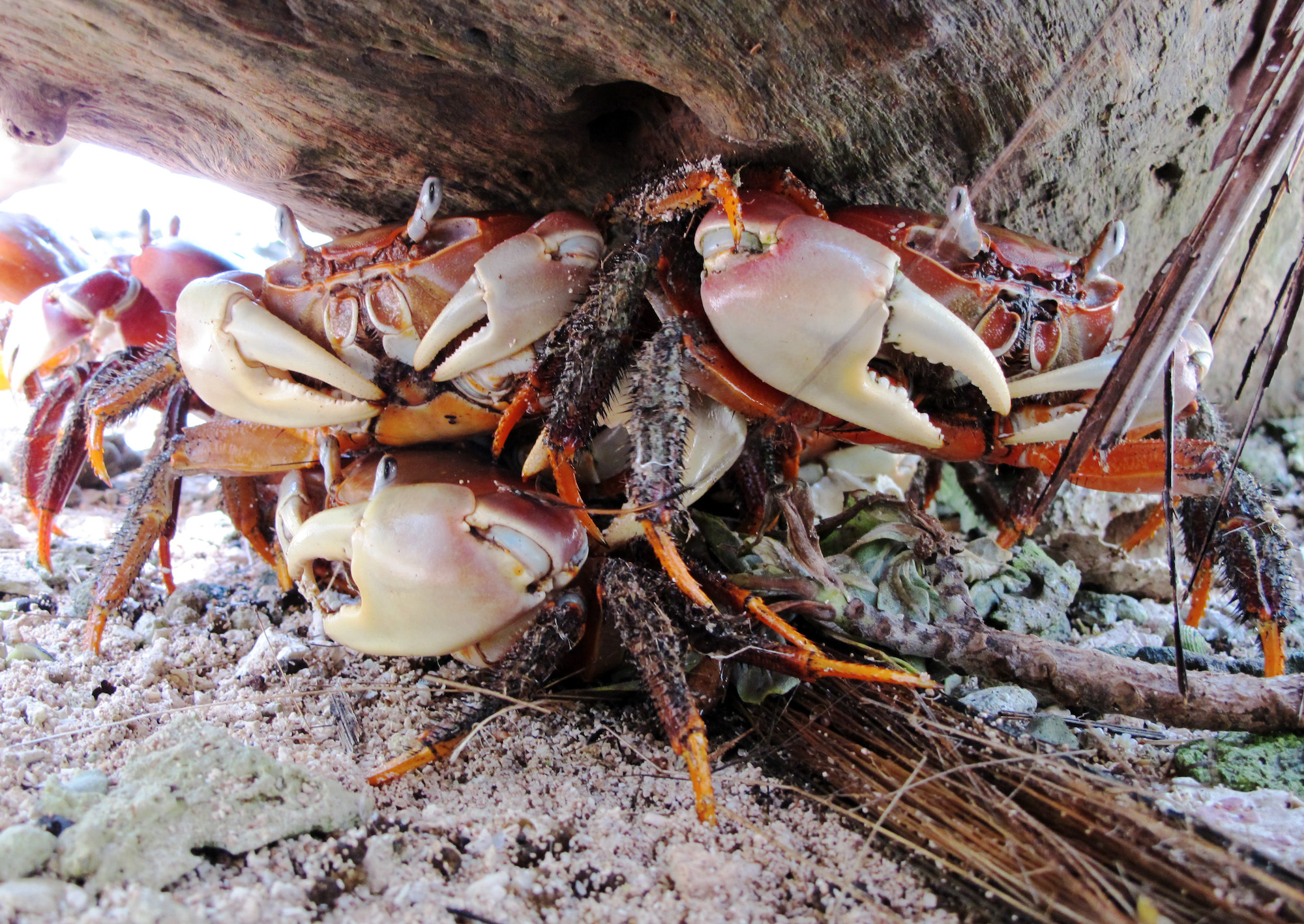
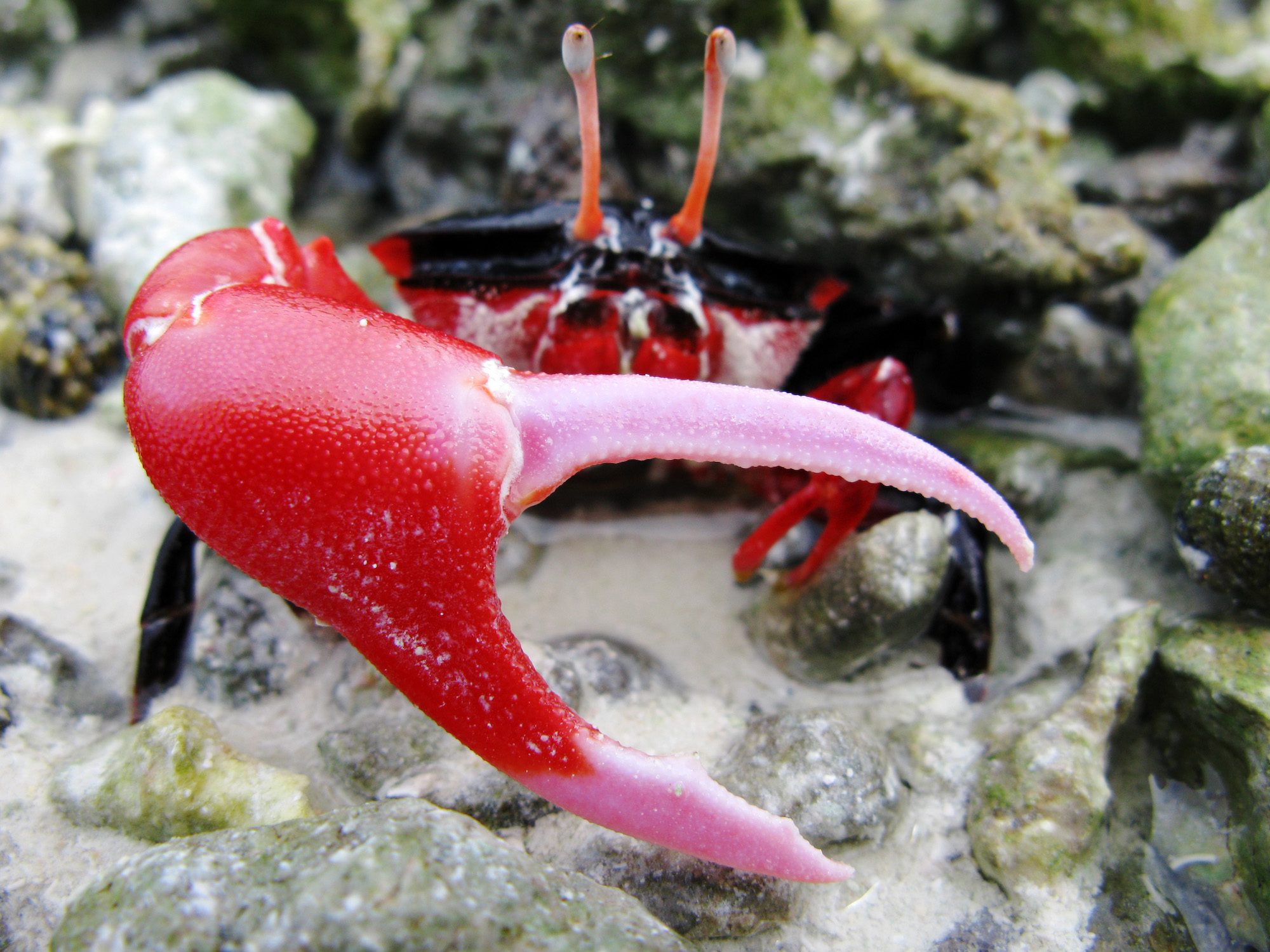
The coconut crab is the star, and a night-time crab walk will usually yield at least a few. U.S. Fish and Wildlife staff lead a weekly “crab walk” for visiting researchers and Palmyra’s seasonal staff. It’s a popular activity as the group attempts to see all 12 land crab species in an evening. Still, the coconut crab steals the show.
Seeing all these crabs, amidst this biological richness, it’s easy to call Palmyra Atoll a “pristine” environment. But that may be a bit misleading. Palmyra’s known history of human habitation is indeed fairly recent. Notably, it was a U.S. Naval base during World War II. The human presence now seems minimal, but that’s not the same as non-existent. People have caused significant impacts. Chief among those: rats.
Rats arrived, as they often do, on ships. They quickly began eating their way through Palmyra’s terrestrial biodiversity. Staff who worked on the island 10 or 20 years ago tell of the constant pitter-patter of rat feet through the trees and on roofs.
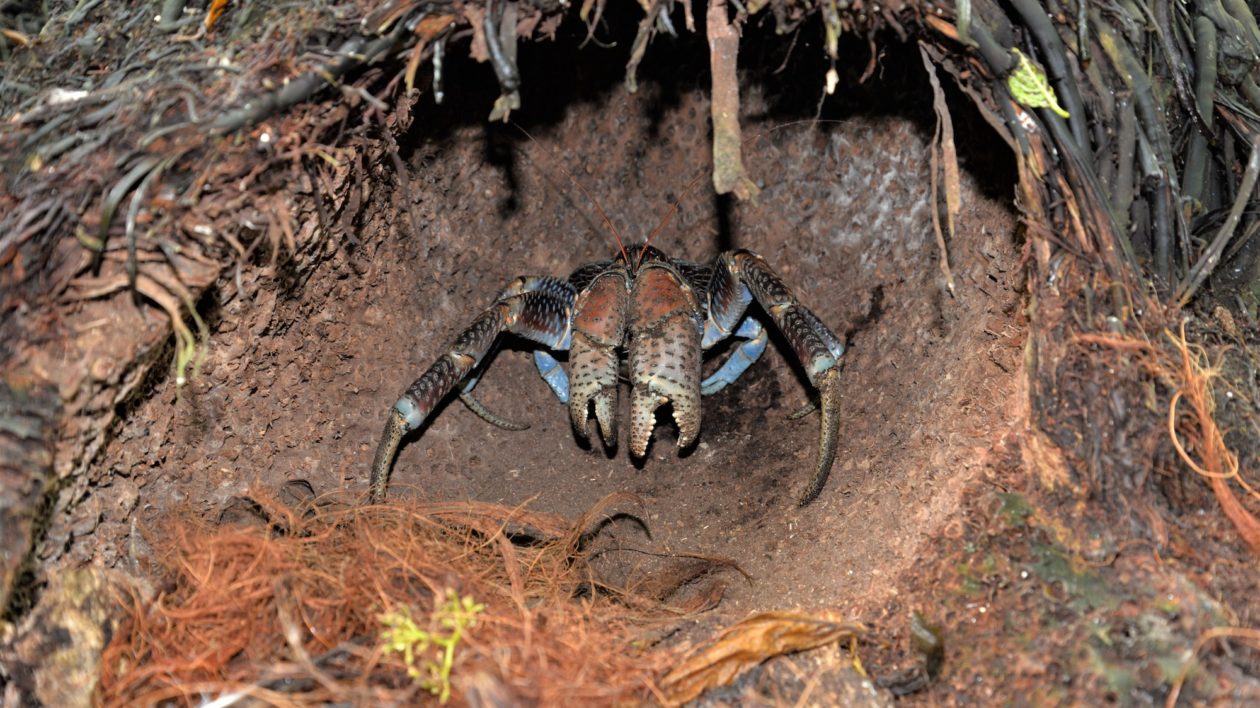
Rats are bad for island wildlife, a fact well established in too many islands around the globe. Many conservationists know they are hell on birds. They eat eggs and nestlings, devastating seabird colonies.
Less known is that invasive rats also devastate crab populations. Now, a coconut crab might seem a formidable foe for a rat, with its crushing claws and impressive strength. That’s true. Rats mainly don’t bother with adult crabs. They focus on the young crabs. With adult crabs living for decades, they persisted on Palmyra, but few young crabs survived.
In 2011, The Nature Conservancy, U.S. Fish and Wildlife Service and Island Conservation partnered to rid Palmyra of rats. It’s a success story environmental writer Ted Williams has called “the miracle on Palmyra.” The last science and technology allowed what had previously been thought an impossible dream: to eradicate every last rat on the island.
It worked. In 2015, Palmyra was proclaimed “rat free.”
Since then, several land crab populations have increased 450 percent. There are two species of tree crabs that researchers didn’t even know existed on Palmyra. They were first documented two years after rat eradication; now they are everywhere.
Coconut crab young are surviving. I often found coconut crabs scuttling away just a short distance from the research base.
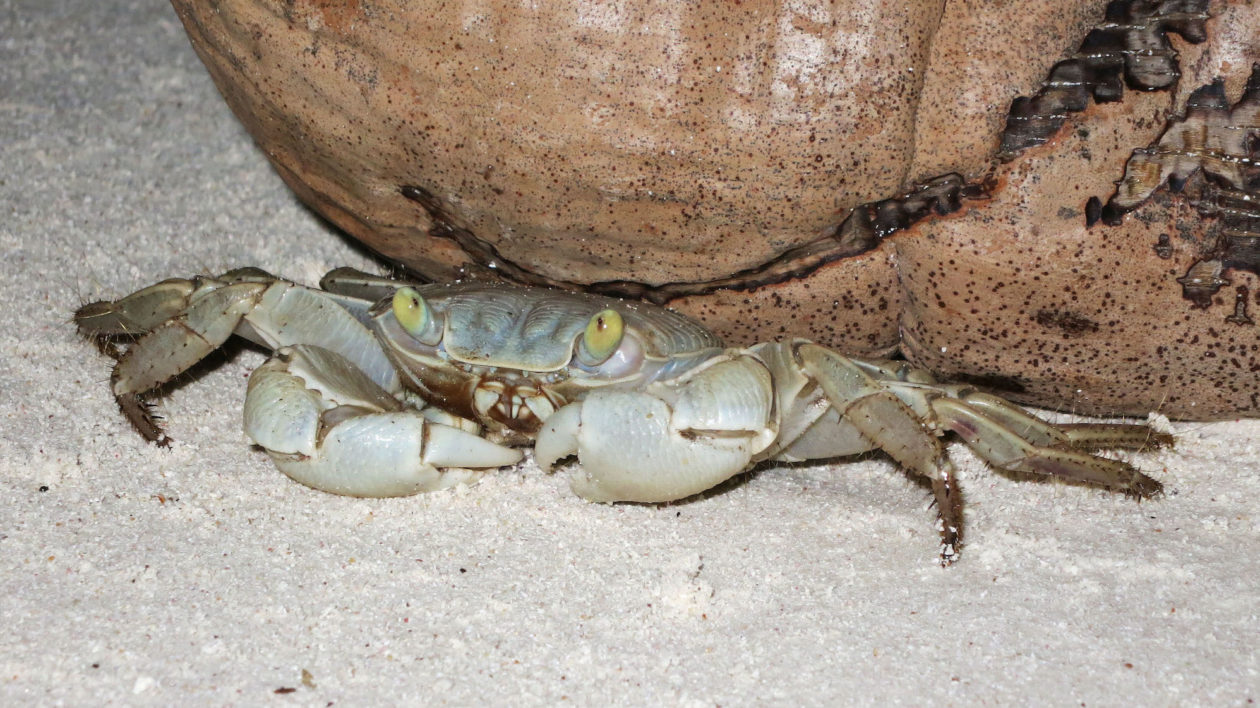
Life as a Coconut Crab
While a coconut crab will also skitter away when a human approaches, if you quietly move towards it, you can be rewarded with a lengthy observation. Up close, a coconut crab looks like a supersized version of a hermit crab, minus the shell.
That is actually the case: hermit crabs and coconut crabs are closely related. When coconut crabs are young, they live in shells in the same way as the hermit crabs you see in pet stores. As they get older, they abandon the shell and instead rely on their tough exterior for protection.
These are truly land crabs. The only time coconut crabs enter the water is when females release eggs into the ocean to start the larval process.
Unlike hermit crabs, they grow large. Very large. They can live for 60 years, with an adult measuring 3 feet across and weighing up to 9 pounds.
Then there’s that claw. Stories have long been told about the crab’s finger-crushing abilities. Recent research quantified that power. A crab can squeeze with a crushing force of 3000 newtons, or about 675 pound per square inch. Compare that to a lobster, which has a crushing force of 250 newtons.
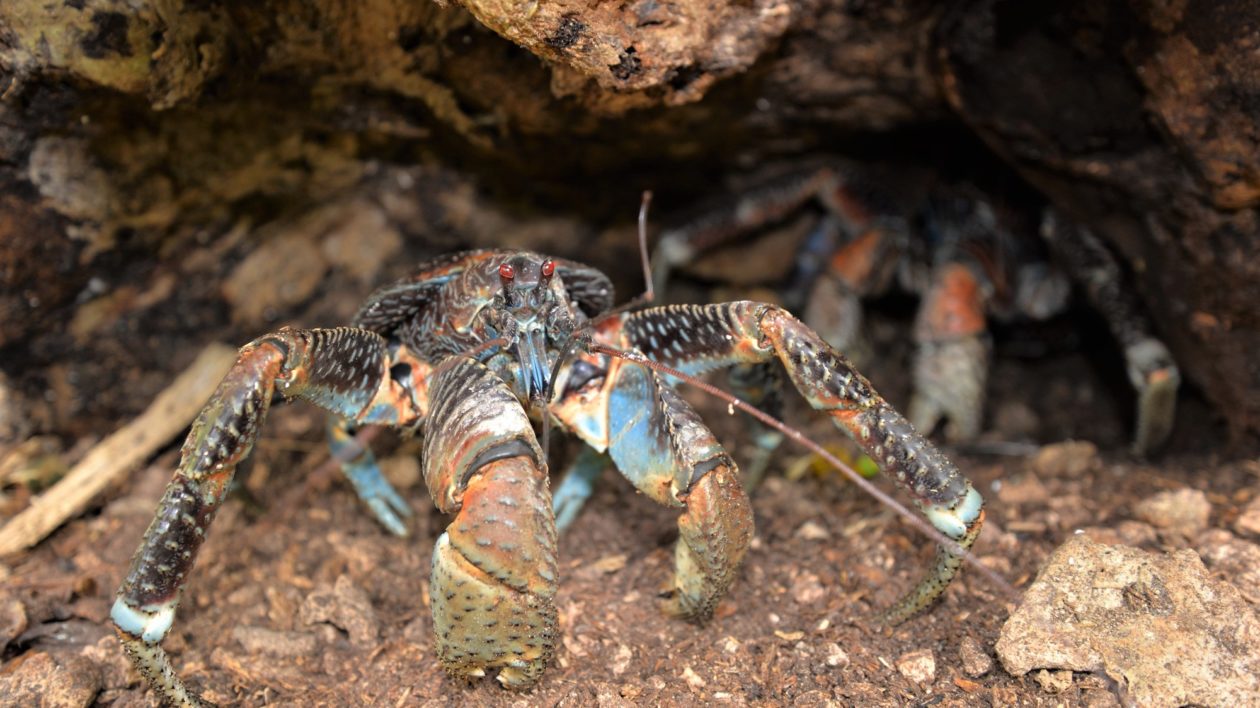
Coconut crabs can also lift more than 60 pounds, and yes, they can crush through coconuts. This has led to the idea that coconuts are the preferred food of this species, but that’s not really the case. Coconut crabs are scavengers and opportunists. They eat primarily fruits, nuts and the pith of fallen trees, but will also eat carrion. On Palmyra, they actively hunt prey, especially other crabs.
They’re also commonly known as robber crabs, partly for this tendency to eat just about anything and partly because they will also carry away items humans leave outside. Colorful stories abound, including one where a crab carried off a full whiskey bottle. Unlike, say, a pack rat, the coconut crab is not stealing shiny objects. Rather, it’s likely related to the crab’s excellent sense of smell. As the animals move around at night or dark rainforest, it relies on keen scenting abilities to find food. Human objects with a trace of food are thus carried off.
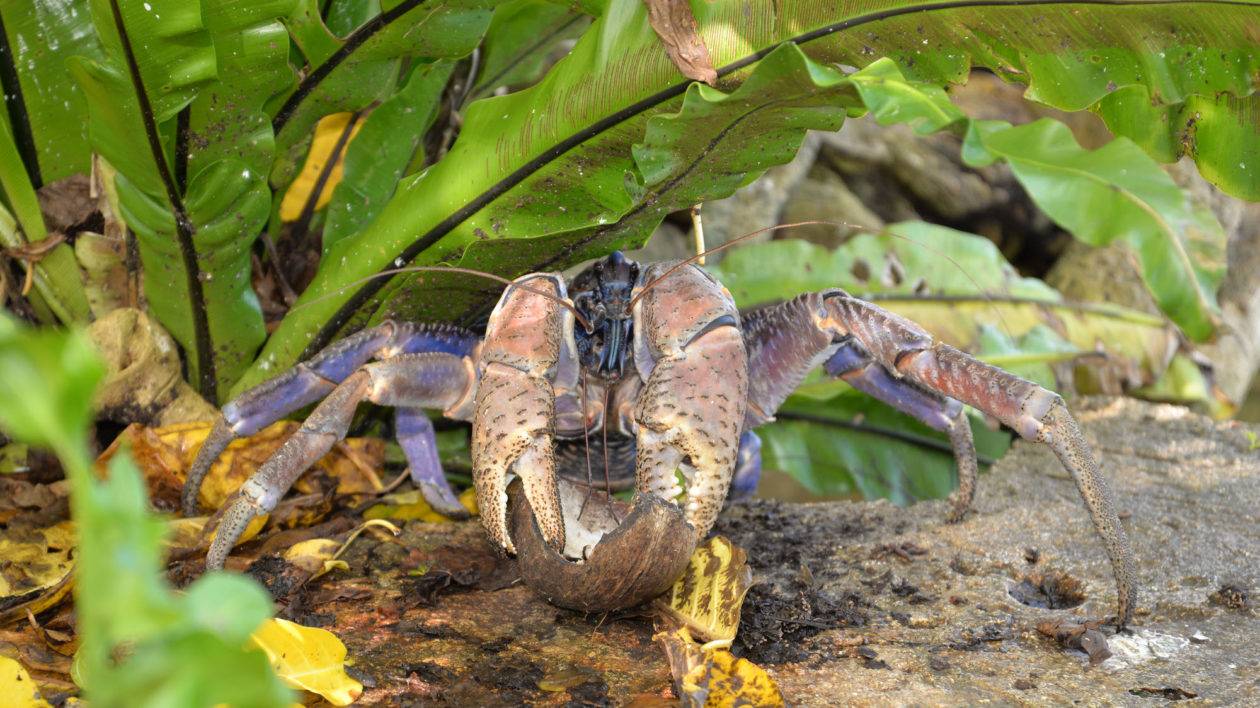
Coconut crabs are found widely in coastal habitats around the Pacific and Indian oceans. In many parts of their range, populations are declining. As reported this year in Mongabay, in some areas, coconut crabs have disappeared completely.
The crabs face a predictable litany of threats. Coconut crabs always live near the coast, often in forest habitats – areas that are often developed. Additionally, people eat coconut crabs so they are vulnerable to overharvesting. On many Pacific islands, they’re a difficult species to see.
That’s not the case on Palmyra. In fact, it’s easier to see coconut crabs than even a few years ago – thanks to a great conservation success.
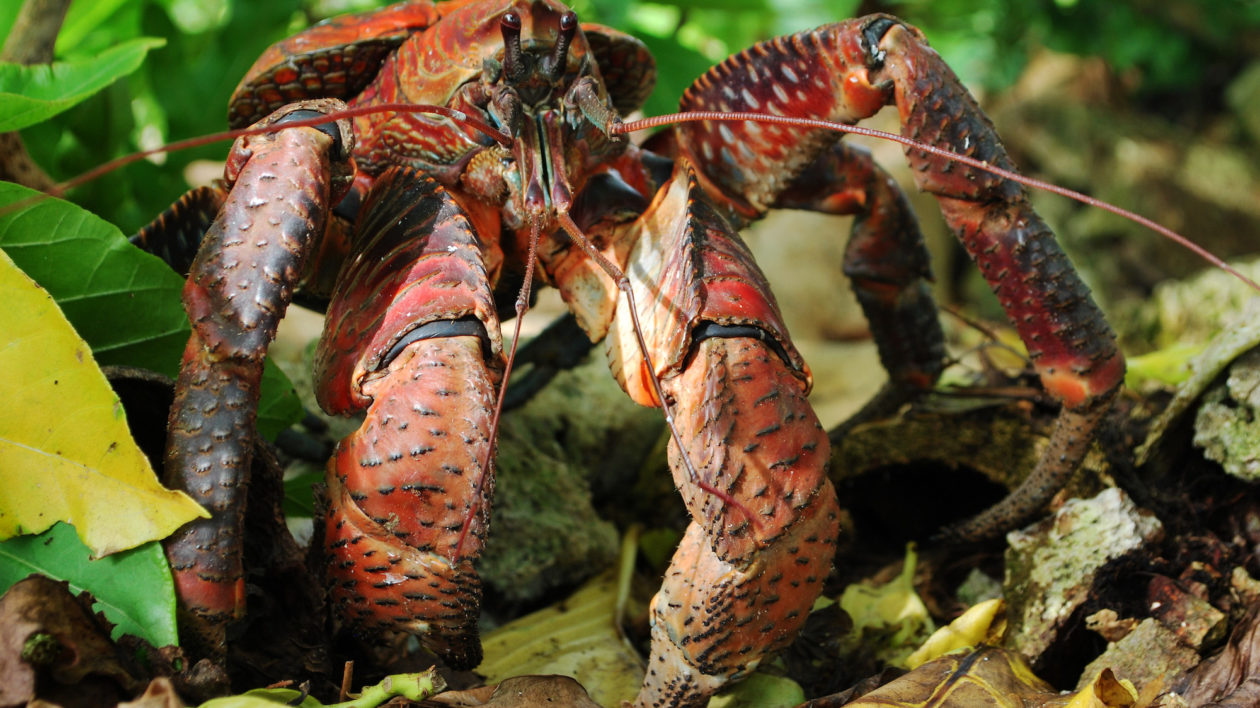
Top 10 Largest Crabs In The World
FAQ
Which type of crab is the biggest?
The Japanese spider crab is a large catch for any fisherman. With a leg span of 13 feet (4 meters) and an average weight of around 40 pounds (16-20 kg), it claims the title of largest crab. It may also have the longest lifespan of any crab, living to be 100 years old.
What’s bigger, king crab or dungeness crab?
King crabs are much larger than Dungeness crabs, with some weighing up to 20 pounds and having a leg span of over five feet. Their spiny, reddish-orange shells and long, robust legs give them a majestic and formidable appearance.
Who is the king of all crabs?
The King of Crabs: All About King Crab
From Alaskan waters to your table, this crustacean reigns supreme in flavor, texture, and versatility.
What is the largest king crab ever caught in Alaska?
World’s largest king crab, 24 pounds. – Anchorage Museum at Rasmuson Center – Alaska’s Digital Archives.
